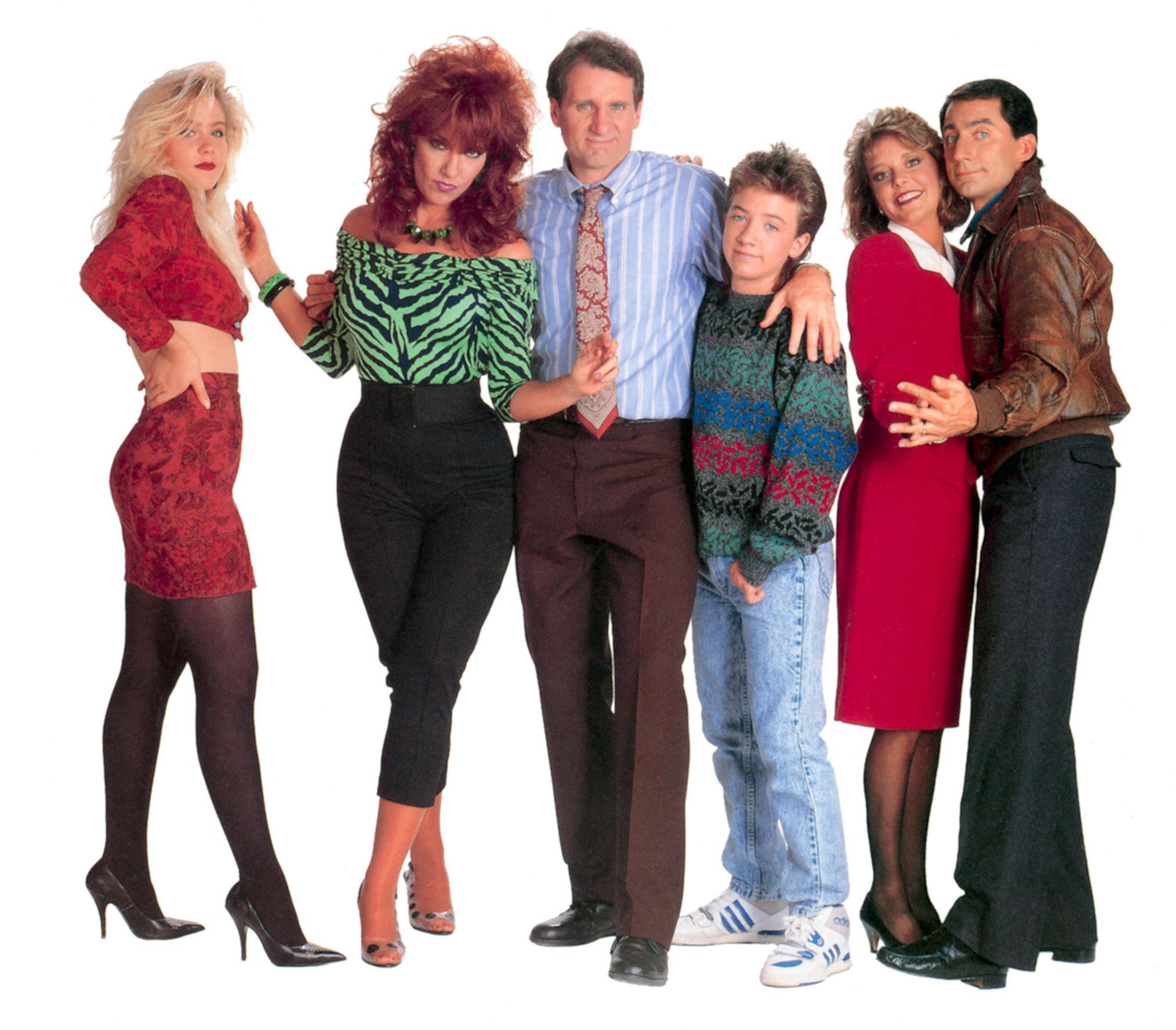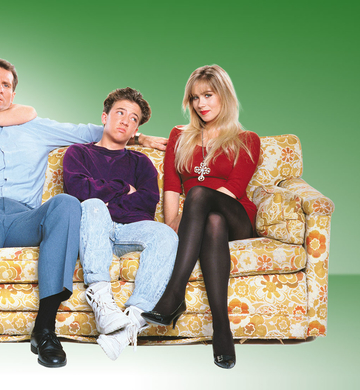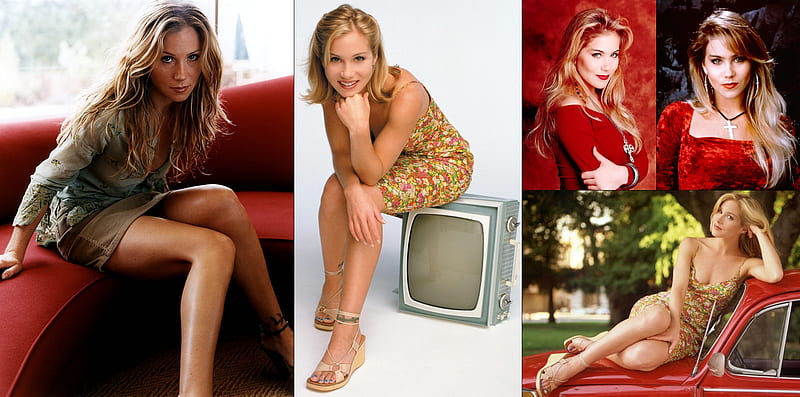This was originally published at my old site four years ago. I’ve revised it a bit to share here because of actress Christina Applegate’s recent disclosure that she has multiple sclerosis. Applegate holds a special place in my heart and has since I was roughly 12 years old, thanks to her funny and sexy performance as Kelly Bundy in the sitcom Married . . . with Children. As adolescent crushes go, few were more dear to me than Christina. Plus, she’s only a few years older than me so I’ve grown up on her career, watching her evolve into movies and television projects, many of which I love. I’m a huge fan of her current series, Dead to Me and I’m hoping she’s able to continue working with MS. The news is tough to stomach, though. It reminds us that life is short and we only get so much time to do what we really want to do. Here’s to Christina, and hoping she can continue to do what she wants to do, and do it as well as she always has, for as long as possible.

Very few television series from the late twentieth-century were as polarizing as Married . . . with Children. People either loved it or loathed it. TV critics and good upstanding Catholic families like mine fell into the latter category. Soon after it debuted during my first year of junior high school (which the kids seem to call “middle school” these days, gawd I’m old) in 1987, my parents made it clear that we would not be watching. I believe the words they used were “vulgar,” “unfunny,” and, one of their perennial favorites, “risque.” Of course, this meant it immediately took on a prurient appeal for me. Parents can never win, honestly.

Kelly Bundy—the talented Christina Applegate, who never gets enough credit for elevating the blonde airhead trope into an art form—only further piqued my interest. She was like the girls in school with the absurdly voluminous hair and ridiculously short skirts who dated older guys that drove Trans Ams and listened to Megadeath. These girls seemed dangerous and completely out of my league. They smoked! They probably drank and went past first base! They certainly wouldn’t have been as impressed with my epic comic book collection as I was. Kelly was so much more approachable, though. After all, she wasn’t real and couldn’t reject me. Inside the still-developing adolescent mind, this meant I had a chance.

Interesting there was very little television I was discouraged from watching. Even adult-oriented sitcoms like Taxi and WKRP in Cincinnati were allowed in our house, and I’m grateful for that because those shows introduced me to adult themes and concerns that resonate with me even more today. In fact, essays I wrote about each of those shows were published last year in Tonight, On A Very Special Episode: When TV Sitcoms Sometimes Got Serious Volume 1: 1957–1985 (shameless plug!). So, I have to believe it’s likely that Kelly’s scandalously short hemlines and playful promiscuity played a large part in my folks’ distaste for Married . . . with Children. What parent wants his or her kid to fall for a wild child like Kelly Bundy? Conversely, what adolescent doesn’t want to fall for a Kelly Bundy type? I repeat: parents just can’t win.

As the decade matured so did Kelly’s wardrobe and even her self-awareness. My crush remained intact throughout the run and she certainly earned her place in my personal ’90s Hall of Fame. I still carry thast crush for Christina today. I’m only human, after all. Plus, she’s proved herself to be one of the funniest women in Hollywood and a truly gifted all-around performer. I’d watch her in anything, any day of the week.
When it came to Married . . . with Children I’m sure many parents were also clutching their pearls over Al Bundy’s crass and leering demeanor, Peg’s laisez-faire style to parenting, Bud’s amorality, and the overall sleaze factor the show so gloriously wallowed in. Gawd I loved it. The gender politics of the show were also wildly entertaining to witness: defiantly retrograde and slyly subversive.

But it was also knowingly winking at us through its trashy aesthetic. The makers of the show knew they were tweaking audiences who couldn’t see this for what it was: satire. I always appreciated the occasionally smart social commentary it slipped in between the litany of dirty jokes. As Judy Kutulas notes in The Sitcom Reader (2nd Ed.), Married…with Children represented one of the first “Gen X response(s) to the happy family ideal” of the Boomer generation. Whether critics or naysayers wanted to believe it or not, the Bundys’ dysfunctional family dynamic reflected what a lot of Gen X kids’ homes were like.
A year or two ago, I stumbled on some other profound commentary about both the show and the 1990s, but this time from an unlikely source: YouTube. A discussion thread had started in the comments of a music video regarding various nineties trends and topics. One commenter weighed in with a thoughtful and ferocious skewering of Boomers and their disdain for Gen X staples like Married . . .with Children. The poet-philosopher-troll basically said that Boomers turned their noses up at shows like this, taking a false moral high ground built on the backs of Gen Xers. Twenty years later, they said, Married . . .with Children looks more like an impossible Utopian dream every day—a single-income family in a decent house raising two kids on a shoe salesman’s salary. This is an excellent point. Today, with its basic premise so far out of reach for most Americans, the show plays like an elaborate fantasy or science fiction story. The bickering, flawed, and often moronic Bundy clan, always just scrapping by, still lived better than you do now, I’d wager.

Whether we remember Married . . . with Children today for its prescient commentary on socio-economic shifts in American culture over the last few decades, or simply for the stone-cold foxiness of Kelly Bundy, we’ll probably never see the likes of it again. And that’s a shame. I’m grateful to have been there to witness it in real time, and to count Christina Applegate among my first serious celebrity crushes.
Along with Buffy the Vampire Slayer, Married with Children was a staple of Friday night tv over here. Perfect viewing after an evening in the local pubs!
LikeLiked by 2 people